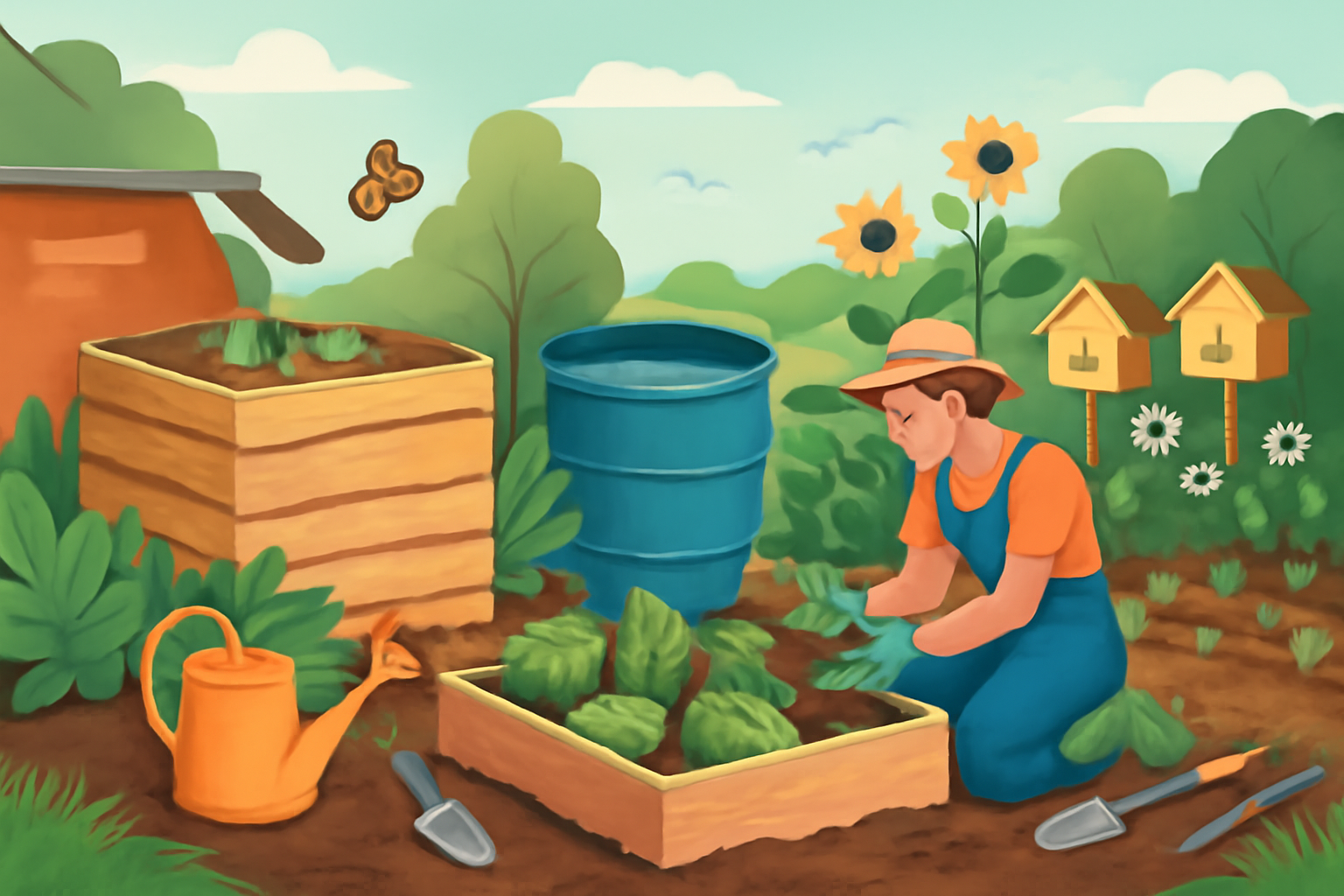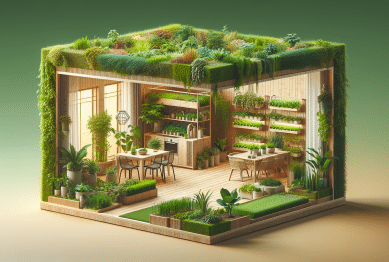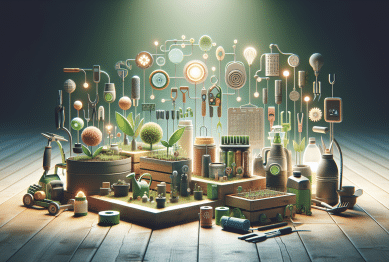Embarking on sustainable gardening is more than a hobby—it’s a lifestyle choice that fosters environmental stewardship while bringing the joy of fresh herbs, fruits, and vegetables. For newcomers, this guide to sustainable gardening for beginners demystifies the eco-friendly path to gardening success, from soil to harvest. And with interest in home sustainability skyrocketing, now is the perfect time to start.

What Is Sustainable Gardening?
Sustainable gardening is about growing plants in harmony with nature. It focuses on reducing environmental impact by using natural resources responsibly, improving soil health, and encouraging biodiversity. Unlike traditional gardening, which often relies on chemical fertilizers and excessive water use, sustainable gardening employs techniques that support long-term ecological balance.
Key benefits of sustainable gardening include:
- Reduced waste
- Improved soil fertility
- Lower water usage
- Support for pollinators and beneficial insects
- Long-term cost savings on garden inputs
According to the Royal Horticultural Society, sustainable gardening is rapidly becoming the norm rather than the exception due to increasing climate awareness (RHS, 2024).
Why Sustainable Gardening Matters Now
The urgency of environmental challenges—climate change, water scarcity, and declining soil quality—makes sustainable gardening not just trendy, but essential. Gardens can become small-scale ecosystems that offset carbon, recycle waste, and promote wildlife.
A recent study from the University of Sheffield highlights that urban gardens collectively cover more land than all UK nature reserves and could be critical in addressing biodiversity loss (Lin et al., 2023). As people grow more conscious of their carbon footprint, sustainable gardening for beginners has become one of the most searched-for lifestyle trends of 2025.
Step-by-Step Guide to Getting Started
1. Know Your Space and Soil
Start by assessing your garden’s conditions:
- Sunlight: Most vegetables and herbs need 6–8 hours of sunlight.
- Soil Type: Conduct a soil test to understand pH and nutrient levels. Many garden centers and university extensions offer affordable kits.
- Drainage: Check for standing water after rain; soggy soil can kill roots.
- Local Climate: Choose plants adapted to your local weather.
Tip: Use a soil amendment like compost to improve structure and fertility naturally.
2. Select Native and Climate-Appropriate Plants
Native plants are easier to maintain, more resistant to pests, and require less watering. For example, lavender, yarrow, and black-eyed Susans are drought-resistant and attract beneficial insects.
Many native plants also provide habitat and food for local wildlife, including bees, butterflies, and birds. According to the National Wildlife Federation, incorporating native species boosts pollination success rates and garden productivity (NWF, 2024).
3. Plan Your Layout
Well-thought-out garden design improves productivity and resource efficiency.
- Raised Beds: Easier to maintain and ideal for poor soil conditions.
- Container Gardens: Great for small patios or balconies.
- Companion Planting: Grow plants like basil near tomatoes to deter pests naturally.
- Succession Planting: Grow seasonal crops in rotation to maximize yield.
Use crop rotation to maintain soil fertility and minimize disease.
Sustainable Gardening Practices for Success
1. Build Your Own Compost
Instead of tossing food waste, compost it. Composting diverts organic waste from landfills and turns it into nutrient-rich soil.
- Use kitchen scraps, garden clippings, shredded newspaper, and coffee grounds.
- Avoid meat, dairy, and oily foods which attract pests.
- Maintain a balance between “green” (wet) and “brown” (dry) materials.
Composting reduces greenhouse gases and improves soil structure by increasing microbial activity (EPA, 2023).
2. Smart Watering Techniques
Water is a limited resource, and sustainable gardening minimizes waste through:
- Drip Irrigation: Delivers water directly to plant roots.
- Rain Barrels: Capture rainwater from rooftops for garden use.
- Mulching: Keeps soil moist and suppresses weeds.
- Watering Early: Reduce evaporation by watering in the morning.
Using mulch alone can reduce water usage by up to 25% during hot months (Rodale Institute, 2024).
3. Natural Pest and Weed Control
Avoid synthetic pesticides that harm soil microbes and beneficial insects.
- Neem Oil or Garlic Spray: Natural repellents for aphids and mites.
- Introduce Beneficial Insects: Ladybugs and praying mantises control pest populations.
- Manual Weeding: A hoe and elbow grease still work best.
- Intercropping: Alternate rows of pest-repelling herbs (like mint) with crops.
Trends Driving the Future of Sustainable Gardening
1. No-Dig Gardening
No-dig gardening minimizes soil disruption, preserving structure and microbiomes. Layers of compost, straw, and mulch suppress weeds and enrich the soil naturally.
As reported by The Spruce (2025), no-dig methods are gaining popularity due to their ease and low maintenance, particularly among urban and elderly gardeners.
2. Vertical Gardening
Space constraints in urban settings have driven the rise of vertical gardening. Trellises, stacked pots, and wall-mounted planters allow gardeners to grow upward.
Vertical gardens reduce pest issues and optimize limited areas like balconies. They also add an aesthetic touch to bland walls.
3. Pollinator-Friendly Gardens
With pollinator populations in decline, gardeners are planting milkweed, lavender, and echinacea to attract bees and butterflies. Doing so increases fruit yields and supports ecosystem balance.
Pollinator gardens are now a recommended practice by the USDA and form a critical component of sustainable urban landscapes (USDA, 2024).
Sustainable Gardening for Beginners: Maintenance Tips for Long-Term Success
- Observe Daily: Watch for signs of stress or pests.
- Rotate Crops: Prevents soil nutrient depletion and controls disease.
- Feed the Soil: Reapply compost bi-monthly during growing seasons.
- Stay Informed: Subscribe to gardening blogs or attend local workshops.
Pro tip: Keep a garden journal to track planting dates, rainfall, and what works best.
Final Thoughts
Sustainable gardening for beginners isn’t just about going green—it’s about growing smarter. By using organic methods, conserving resources, and respecting natural cycles, anyone can cultivate a garden that’s productive and planet-friendly. Whether you have a sprawling backyard or a modest balcony, adopting these practices sets you on the path toward responsible and rewarding gardening.
References
- Lin, B. et al. (2023). Urban gardens for biodiversity conservation. University of Sheffield. Available at: https://www.sheffield.ac.uk
- National Wildlife Federation. (2024). Native Plant Gardening Tips. Available at: https://www.nwf.org
- U.S. Environmental Protection Agency (EPA). (2023). Composting At Home. Available at: https://www.epa.gov/recycle/composting-home
- The Spruce. (2025). No Dig Gardening: The Easy Planting Method. Available at: https://www.thespruce.com/no-dig-gardening-11727356
- Rodale Institute. (2024). Soil Health and Water Conservation. Available at: https://rodaleinstitute.org









